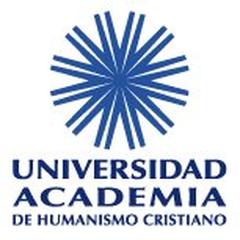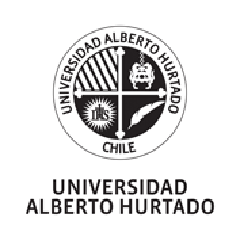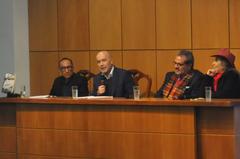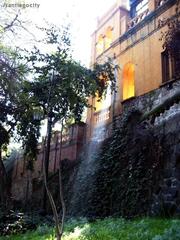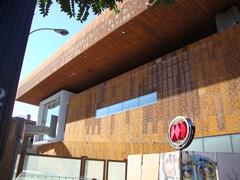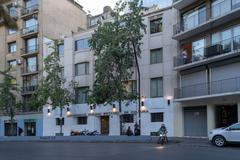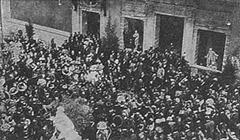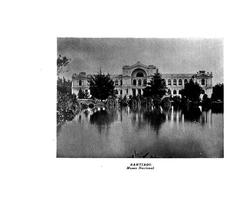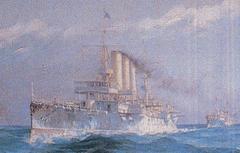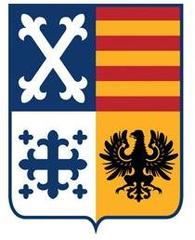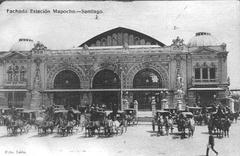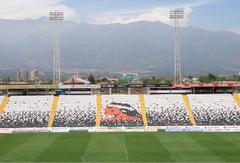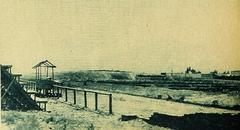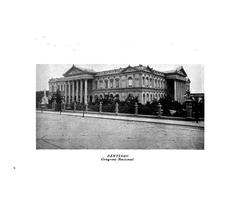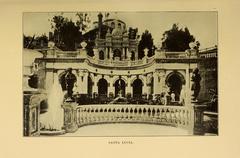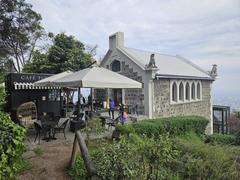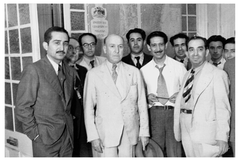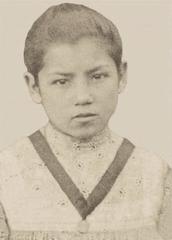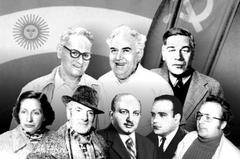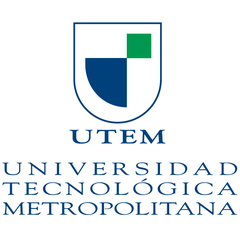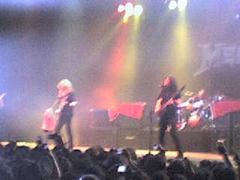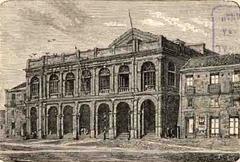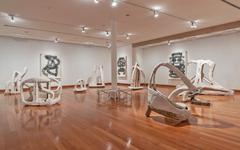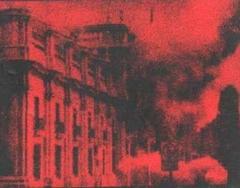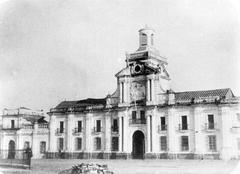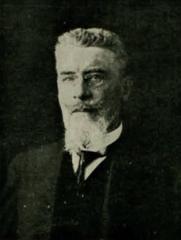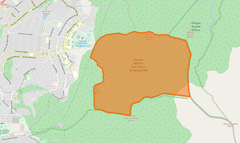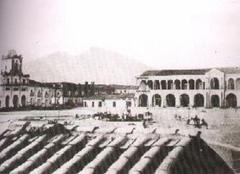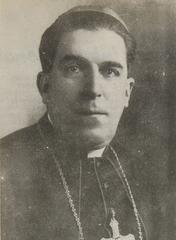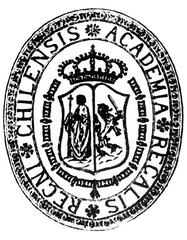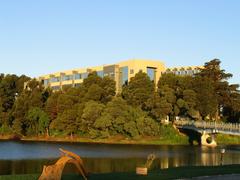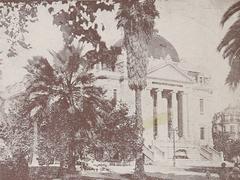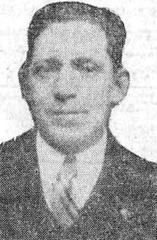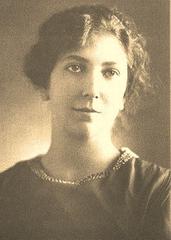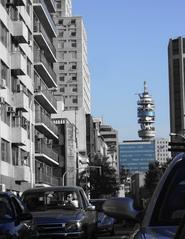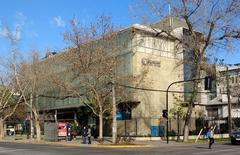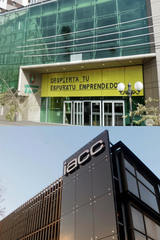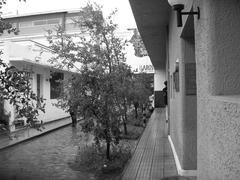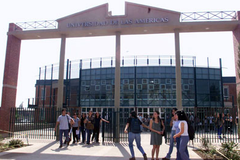Estadio Monumental Santiago Visitor’s Guide
Publication Date: 31/07/2024
Introduction to Estadio Monumental
Estadio Monumental David Arellano stands as a beacon of Chilean sports history and cultural fervor. Located in the Macul commune of Santiago, the stadium, commonly known as Estadio Monumental, is the proud home of Colo-Colo, one of Chile’s most successful football clubs. From its inception in 1956 and official inauguration in 1975, the stadium has witnessed a plethora of historic moments, architectural innovations, and passionate fan gatherings. Designed by Mario Recordón, Estadio Monumental is not just a venue but a landmark that epitomizes the spirit of Chilean football (Football Chileno). Whether you’re a football enthusiast, a history buff, or a cultural explorer, this comprehensive guide aims to provide you with all the essential information—including history, ticketing details, and tips for visiting—to make your trip to Estadio Monumental a memorable one.
Contents Overview
- Introduction
- History of Estadio Monumental
- Inception and Early Years
- Initial Challenges and Renovations
- Architectural Significance
- Capacity and Attendance
- Historic Matches and Moments
- Cultural Significance
- Visiting Hours and Tickets
- Nearby Attractions and Travel Tips
- Modern-Day Use and Events
- Future Prospects
- FAQs
- Conclusion
Visiting Estadio Monumental David Arellano: History, Tickets, and Tips
History of Estadio Monumental
Inception and Early Years
Estadio Monumental, officially known as Estadio Monumental David Arellano, began construction in 1956 and was inaugurated in 1975 with a match between Colo-Colo and Club Universidad de Chile (Football Chileno). Designed by architect Mario Recordón, the stadium quickly became an architectural marvel and a symbol of Chilean footballing prowess.
Initial Challenges and Renovations
Despite its grand opening, the initial structure proved unsuitable for ongoing use, leading to only five matches being played there before Colo-Colo moved back to Estadio Nacional (Stadium Guide). It wasn’t until 1989, after selling player Rubio to Bologna, that sufficient funds were available to complete the stadium. Estadio Monumental reopened on September 30, 1989, with a friendly match against Peñarol, which Colo-Colo won 2-1 (Football Chileno).
Architectural Significance
The stadium’s design is a testament to Mario Recordón’s vision, aimed at creating a venue that would serve as both a football ground and a landmark in Chilean sports history. The stadium has undergone several renovations to improve its facilities and enhance the overall fan experience. Notably, in 2013, significant renovations were made to modernize the amenities and infrastructure (Facts.net).
Capacity and Attendance
Estadio Monumental has a current spectator capacity of 47,347, making it one of the largest stadiums in Chile (Football Tripper). The highest recorded attendance was in 1992 during a derby with Universidad de Chile, where 69,305 people witnessed the game (Stadium Guide). Over the years, the capacity has been gradually reduced due to safety measures and the installation of proper seats in 2006.
Historic Matches and Moments
Estadio Monumental has been the stage for some of the most memorable matches in Chilean football history. One of the most significant moments came in 1991 when Colo-Colo defeated Club Olimpia to win the Copa Libertadores, becoming the first Chilean club to claim the prestigious title (Football Chileno). Another unforgettable moment was the 2005 Clásico del Fútbol Chileno, a fierce rivalry match between Colo-Colo and Club Universidad de Chile, which ended in a 1-1 draw but was marked by the intensity and passion of the fans.
Cultural Significance
Beyond its physical presence, Estadio Monumental represents the passion and dedication of the Colo-Colo fanbase. The stadium stands as a testament to the rich history and tradition of Colo-Colo, a club that has consistently been at the forefront of Chilean football (Football Chileno). The deafening roars of the crowd create an electrifying atmosphere that fuels the players and ignites the spirit of competition.
Visiting Hours and Tickets
If you’re planning to visit Estadio Monumental, it’s important to know the visiting hours and ticket information. The stadium is generally open to visitors from 10:00 AM to 6:00 PM, Monday through Saturday. Tickets for matches and tours can be purchased online via the official Colo-Colo website or at the stadium’s ticket office. Prices vary depending on the event and seating section, so it’s advisable to check in advance for availability and pricing.
Nearby Attractions and Travel Tips
Santiago offers a plethora of attractions that can be combined with your visit to Estadio Monumental. Nearby, you’ll find the Museo Nacional de Historia Natural, Parque O’Higgins, and the iconic Cerro San Cristóbal, which offers breathtaking views of the city. For convenience, consider using public transport or ride-sharing services to navigate the city. The stadium is accessible via the Santiago Metro, with the closest station being Pedrero on Line 5.
Modern-Day Use and Events
In addition to football matches, Estadio Monumental has become a popular venue for concerts and other events. In 2024, the stadium is set to host concerts by renowned artists such as Paul McCartney and Feid (Viajando Travel). These events highlight the stadium’s versatility and its importance as a cultural hub in Santiago.
Future Prospects
Looking ahead, there are plans for a profound remodel of Estadio Monumental in preparation for its centenary. While no specific project has been presented yet, the aim is to further enhance the stadium’s facilities and ensure it remains a premier venue for sports and entertainment in Chile (Viajando Travel).
FAQs
What are the visiting hours for Estadio Monumental? The stadium is open to visitors from 10:00 AM to 6:00 PM, Monday through Saturday.
How can I buy tickets for a match at Estadio Monumental? Tickets can be purchased online via the official Colo-Colo website or at the stadium’s ticket office.
Are there guided tours available? Yes, guided tours are available and can be booked in advance through the official website.
What are some nearby attractions? Nearby attractions include Museo Nacional de Historia Natural, Parque O’Higgins, and Cerro San Cristóbal.
Conclusion
Estadio Monumental David Arellano is not just a football stadium; it is a symbol of Chilean sports history, passion, and pride. Its rich history, architectural significance, and cultural impact make it a must-visit destination for football fans and tourists alike. Stay up to date with events and plan your visit to experience the electrifying atmosphere of one of Chile’s most iconic landmarks.
Sources and Further Reading
- Football Chileno. (n.d.). Estadio Monumental: Home of Colo-Colo’s triumphs. Retrieved from https://www.footballchileno.com/estadio-monumental-home-of-colo-colos-triumphs/
- Stadium Guide. (n.d.). Monumental David Arellano. Retrieved from https://www.stadiumguide.com/monumentaldavidarellano/
- Facts.net. (n.d.). 13 intriguing facts about Estadio Monumental David Arellano. Retrieved from https://facts.net/world/landmarks/13-intriguing-facts-about-estadio-monumental-david-arellano/
- Football Tripper. (n.d.). Estadio Monumental David Arellano. Retrieved from https://footballtripper.com/chile/estadio-monumental-david-arellano/
- Viajando Travel. (2024). Estadio Monumental: Los conciertos anunciados para 2024. Retrieved from https://chile.viajando.travel/estadio-monumental/estadio-monumental-los-conciertos-anunciados-2024-n51783
- The Paul McCartney Project. (2024). New South America Leg for the Got Back Tour Announced. Retrieved from https://www.the-paulmccartney-project.com/2024/06/new-south-america-leg-for-the-got-back-tour-announced/
